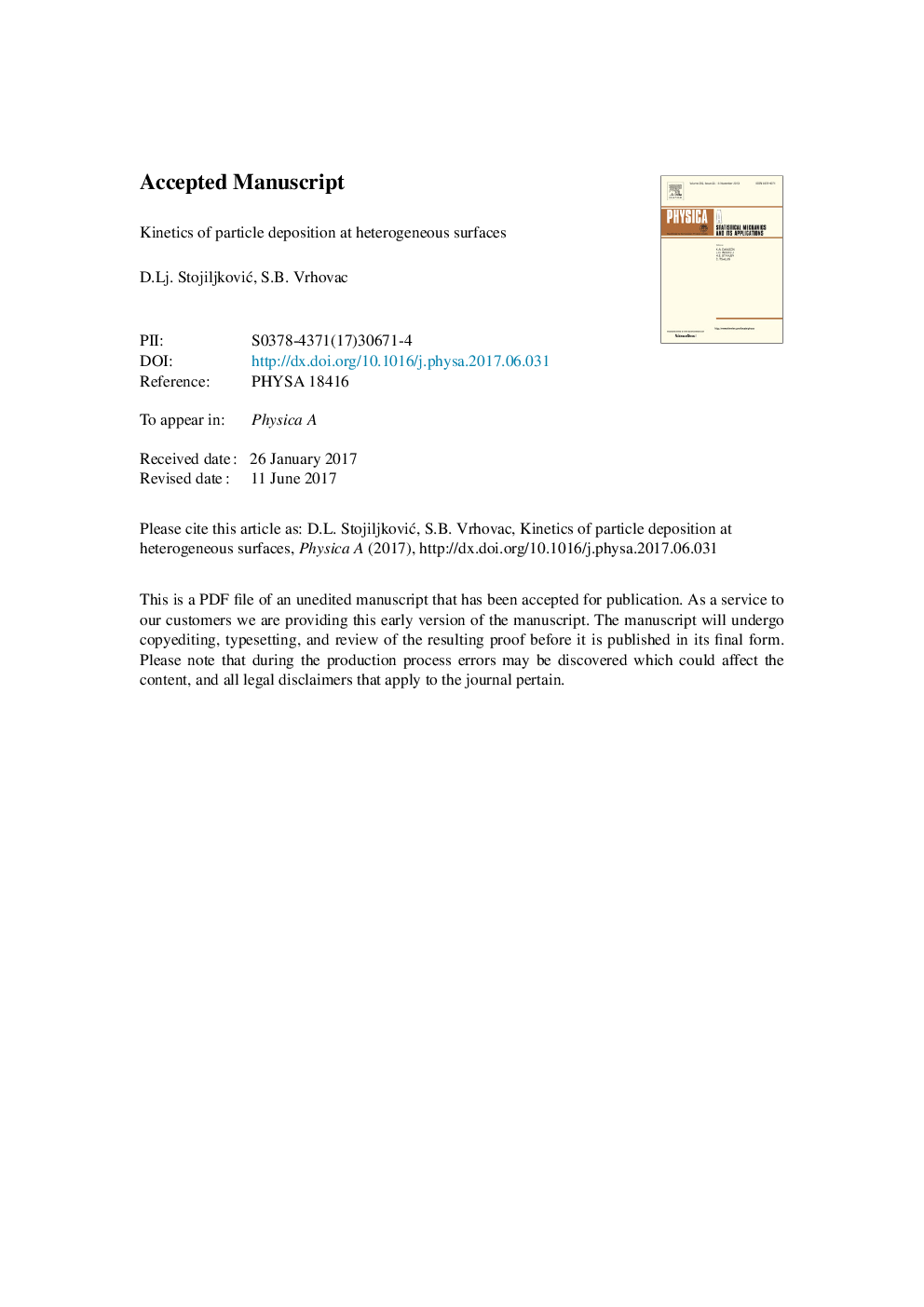| Article ID | Journal | Published Year | Pages | File Type |
|---|---|---|---|---|
| 5102523 | Physica A: Statistical Mechanics and its Applications | 2017 | 41 Pages |
Abstract
The random sequential adsorption (RSA) approach is used to analyze adsorption of spherical particles of fixed diameter d0 on nonuniform surfaces covered by square cells arranged in a square lattice pattern. To characterize such pattern two dimensionless parameters are used: the cell size α and the cell-cell separation β, measured in terms of the particle diameter d0. Adsorption is assumed to occur if the particle (projected) center lies within a cell area. We focus on the kinetics of deposition process in the case when no more than a single disk can be placed onto any square cell (α<1â2â0.707). We find that the asymptotic approach of the coverage fraction θ(t) to the jamming limit θJ is algebraic if the parameters α and β satisfy the simple condition, β+αâ2<1. If this condition is not satisfied, the late time kinetics of deposition process is not consistent with the power law behavior. However, if the geometry of the pattern approaches towards “noninteracting conditions” (β>1), when adsorption on each cell can be decoupled, approach of the coverage fraction θ(t) to θJ becomes closer to the exponential law. Consequently, changing the pattern parameters in the present model allows to interpolate the deposition kinetics between the continuum limit and the lattice-like behavior. Structural properties of the jammed-state coverings are studied in terms of the radial distribution function g(r) and spatial distribution of particles inside the cell. Various, non-trivial spatial distributions are observed depending on the geometry of the pattern.
Related Topics
Physical Sciences and Engineering
Mathematics
Mathematical Physics
Authors
D.Lj. StojiljkoviÄ, S.B. Vrhovac,
